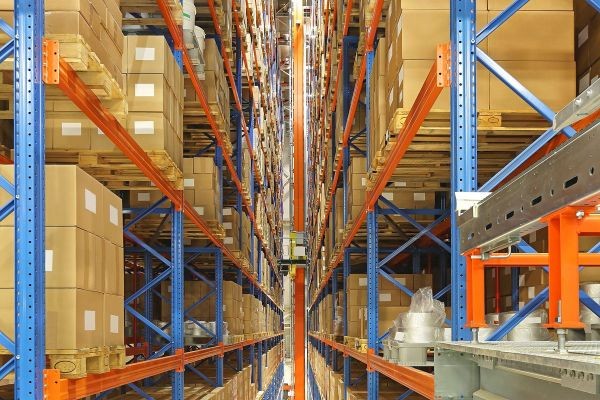The Automated Storage and Retrieval Systems Market has been witnessing strong momentum as industries worldwide embrace digital transformation, automation, and intelligent warehouse management. Growing e-commerce activity, rising consumer demand for faster deliveries, and global supply chain complexities are compelling businesses to invest in advanced storage and retrieval technologies. These systems not only optimize warehouse space but also reduce labor dependency, increase accuracy, and improve operational efficiency.
Market Overview
Automated Storage and Retrieval Systems (ASRS) are computer-controlled technologies designed to automatically place and retrieve loads from storage locations with precision. They are widely used in warehouses, distribution centers, and manufacturing facilities where handling large inventories and high-speed operations are critical. ASRS solutions include unit-load systems, mini-load systems, vertical lift modules (VLMs), carousels, and shuttle-based solutions.
Market growth is underpinned by factors such as rapid e-commerce penetration, increasing labor costs, and the need for space optimization in urban logistics hubs. Additionally, the integration of Industry 4.0 technologies—like artificial intelligence (AI), machine learning (ML), and the Internet of Things (IoT)—is reshaping warehouse automation, enabling predictive analytics and real-time inventory management.
Key Growth Drivers
-
E-commerce Boom
The exponential rise of online shopping has transformed supply chains. Fulfillment centers require high-speed and accurate order picking, pushing demand for ASRS solutions. With same-day and next-day delivery becoming the norm, businesses are adopting shuttle-based systems for faster throughput. -
Labor Shortages and Rising Costs
Warehousing operations face workforce shortages and increasing labor costs, especially in developed markets. Automated systems help reduce reliance on manual labor while minimizing errors, ensuring cost savings over the long term. -
Space Optimization in Urban Logistics
With urban real estate costs surging, businesses need to maximize vertical and horizontal space in warehouses. ASRS provides dense storage solutions, particularly through VLMs and carousels, making them ideal for high-cost urban hubs. -
Industry 4.0 Integration
ASRS integrated with AI, robotics, and data analytics allows businesses to achieve real-time monitoring and smarter decision-making. Predictive maintenance enabled by IoT sensors further reduces downtime and enhances productivity. -
Sustainability Initiatives
Companies are increasingly adopting green warehousing practices. Automated systems reduce energy consumption by optimizing material flow and minimizing waste, aligning with sustainability goals.
Market Segmentation
-
By Type
-
Unit Load ASRS: Ideal for handling large, palletized loads in bulk storage.
-
Mini Load ASRS: Designed for small parts and high-volume order fulfillment.
-
Shuttle Systems: Offer scalability and high throughput for e-commerce operations.
-
Vertical Lift Modules & Carousels: Maximize space utilization for smaller items.
-
-
By Application
-
E-commerce and Retail: Fast-moving consumer goods and order fulfillment.
-
Automotive: Managing spare parts and components.
-
Healthcare and Pharmaceuticals: Ensuring accuracy and compliance in inventory management.
-
Food & Beverage: Cold storage and temperature-controlled logistics.
-
Manufacturing: Streamlining just-in-time production processes.
-
-
By End-User Industry
Industries such as aerospace, electronics, and chemicals are also integrating ASRS to enhance operational safety, accuracy, and efficiency.
Regional Insights
-
North America: Strong adoption due to advanced logistics infrastructure, high labor costs, and technological innovation.
-
Europe: Rapid growth driven by automotive and manufacturing industries alongside stringent labor regulations.
-
Asia-Pacific: The fastest-growing region, supported by booming e-commerce markets in China, India, and Southeast Asia, as well as rising industrialization.
-
Latin America and Middle East & Africa: Increasing adoption in retail and logistics, though growth remains gradual compared to developed markets.
Emerging Trends
-
Robotics Integration
Autonomous mobile robots (AMRs) and robotic arms are increasingly combined with ASRS to enhance picking and replenishment speed. -
Cloud-Based Warehouse Management
Cloud-enabled ASRS platforms provide scalability and real-time data visibility, enabling global supply chain integration. -
Cold Chain Automation
Rising demand for frozen and perishable goods has spurred adoption of ASRS in temperature-controlled environments, improving efficiency while ensuring product safety. -
AI and Predictive Analytics
Machine learning algorithms predict inventory demand, optimize storage allocation, and enhance decision-making accuracy.
Challenges
Despite strong growth prospects, the ASRS market faces certain challenges:
-
High Initial Investment: Significant capital expenditure limits adoption by small and medium enterprises.
-
Complexity in Integration: Seamless integration with existing warehouse management systems requires expertise and customization.
-
Maintenance and Downtime Risks: Technical failures can disrupt operations, making robust after-sales support essential.
Future Outlook
The future of the Automated Storage and Retrieval Systems Market lies in greater connectivity, intelligence, and sustainability. As industries prioritize resilience, efficiency, and cost optimization, ASRS adoption is expected to surge across both developed and emerging economies. Innovations in robotics, AI-driven decision-making, and energy-efficient systems will redefine modern warehousing and distribution networks.

